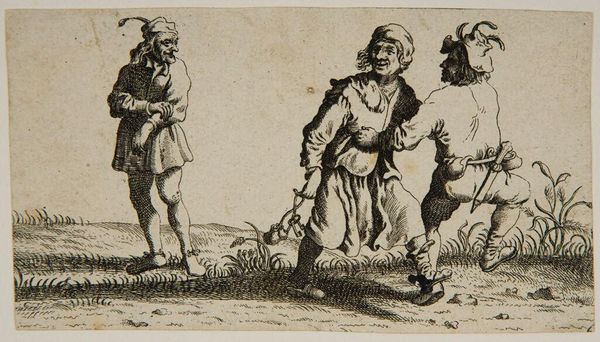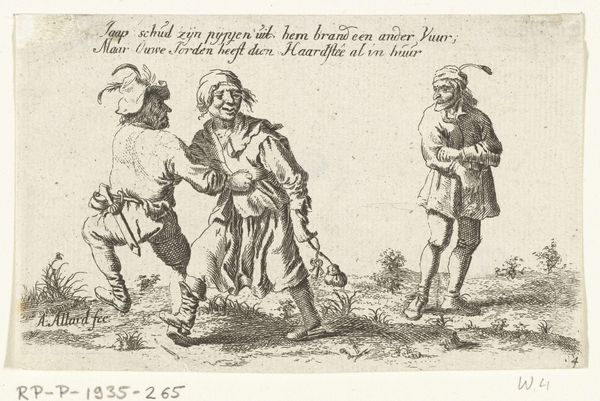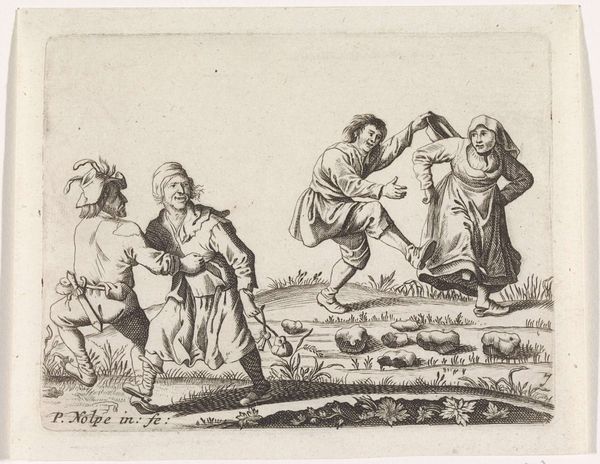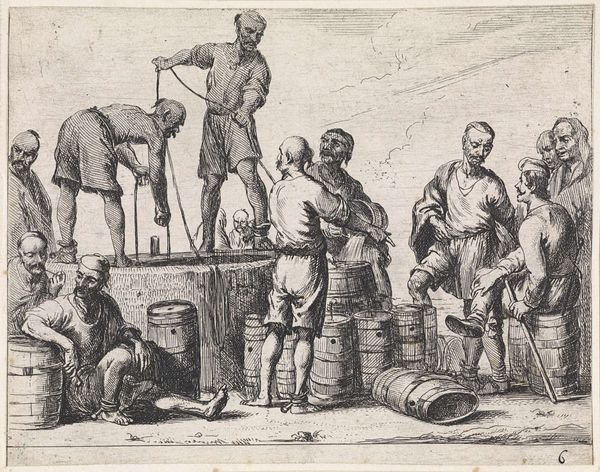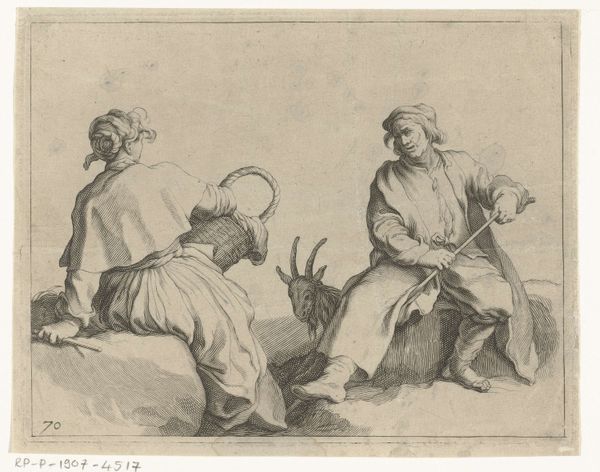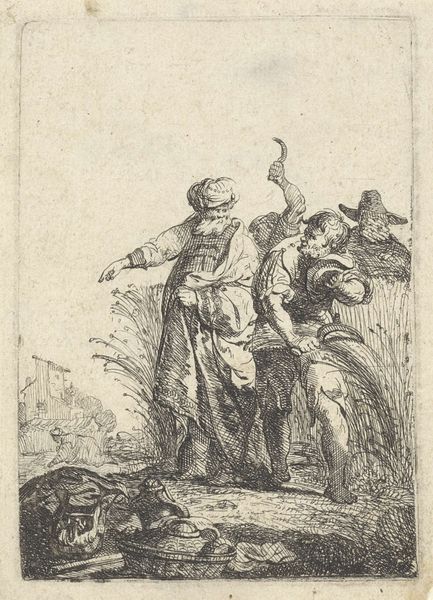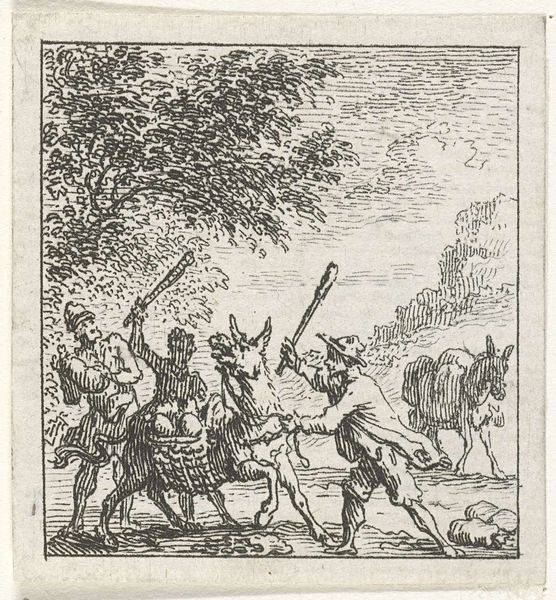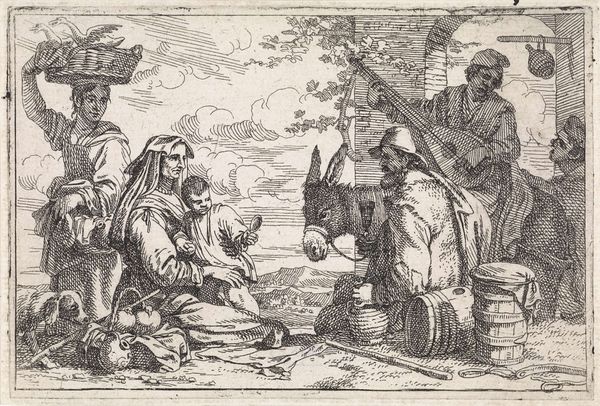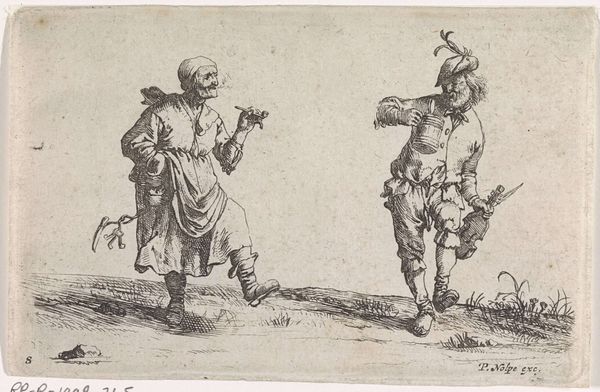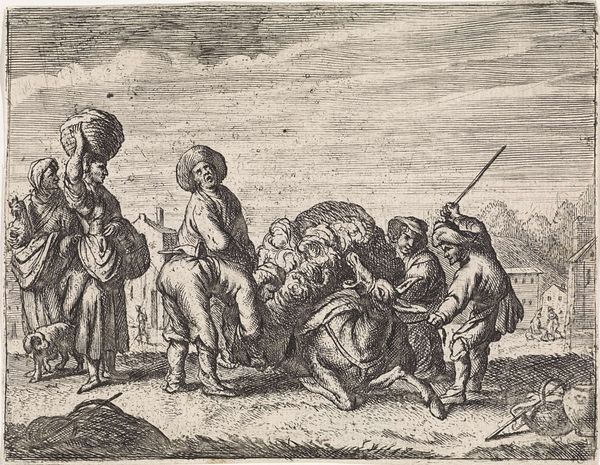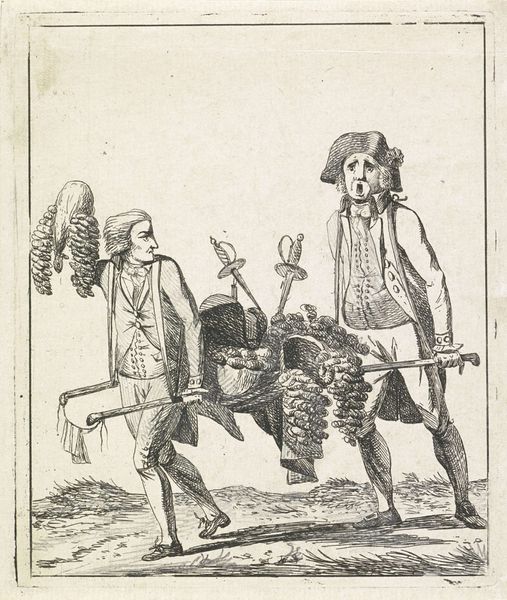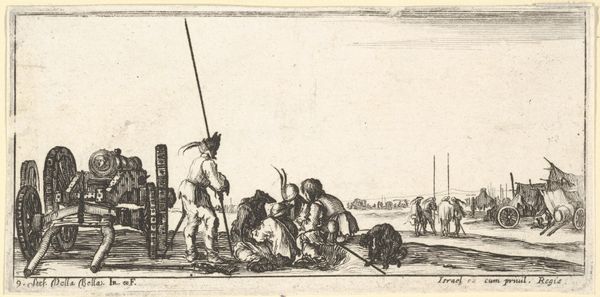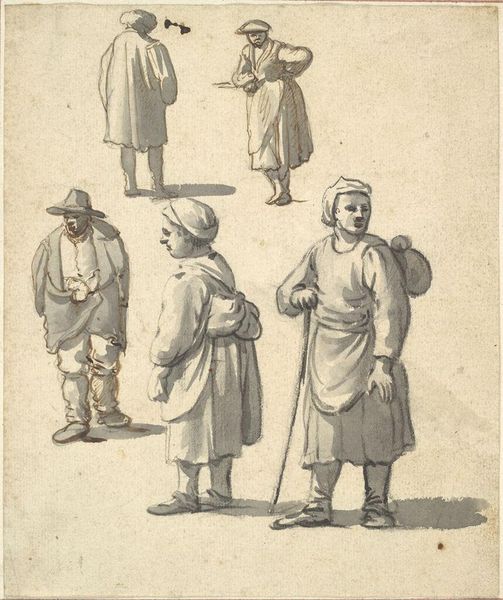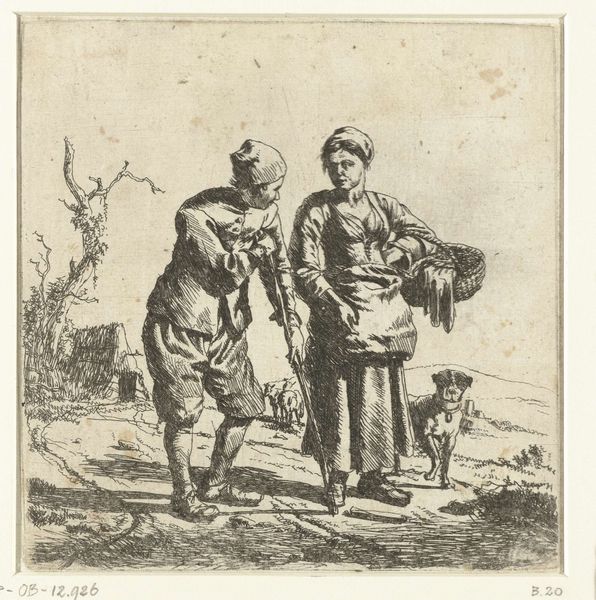
drawing, print, etching, ink, pen
#
drawing
#
narrative-art
#
dutch-golden-age
# print
#
pen sketch
#
etching
#
figuration
#
ink
#
pen
#
genre-painting
Dimensions: height 67 mm, width 133 mm
Copyright: Rijks Museum: Open Domain
Curator: Here we have Pieter Nolpe’s “Two Dancing Peasants and a Spectator,” likely created between 1623 and 1653, an etching in ink and pen now held at the Rijksmuseum. What catches your eye? Editor: Immediately, it's the slightly unhinged joy radiating from those dancing figures. The stark lines of the etching almost amplify the frenzy of the dance, juxtaposed with the stillness of the spectator. It has a kind of rustic abandon. Curator: It’s fascinating how Nolpe captures the peasant culture during the Dutch Golden Age. Genre scenes like this gained popularity, offering a glimpse into the lives of ordinary people and serving particular social functions for the audiences that engaged with them. Editor: I agree, there's certainly a theatrical quality to it. Their clothing and the overall scene evokes a particular rural identity. The pouch held by one of the dancers—likely containing drink—is a potent symbol. Is this perhaps alluding to more than simple merriment? Curator: Possibly. Drink, dance, and observation are key ingredients for popular imagery, suggesting themes of excess or cautionary narratives linked with public spectacle. Prints such as these offer us accessible scenes but might also provide social commentary. Editor: Notice the man standing aside. He’s removed, self-contained and alone. Could he represent the observer, someone meant to consider this revelry, or perhaps, someone excluded from it? The feathered cap and facial features of the dancers might carry broader cultural meanings. Curator: Such garb was fairly conventional in genre paintings of the period, but definitely held connotations. Peasant imagery allowed city dwellers to playfully engage with an image of rustic life, to safely engage in symbolic cultural distinction. Editor: Interesting. So Nolpe’s work invites the viewer to engage in a way beyond simple documentation; it offers layers of coded imagery about class, societal expectation, and, perhaps, even hidden social commentary. Curator: Precisely. We see not only daily life, but how it was observed, categorized, and presented. It enriches our view on how social performances get represented within culture. Editor: Looking closer, I appreciate that Nolpe encourages one to reflect on both the immediate spectacle, but the enduring narratives conveyed by visual language itself. Curator: Indeed, a vivid snapshot offering glimpses into the performance of Dutch society in the Golden Age.
Comments
No comments
Be the first to comment and join the conversation on the ultimate creative platform.
